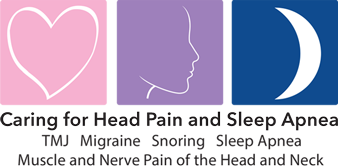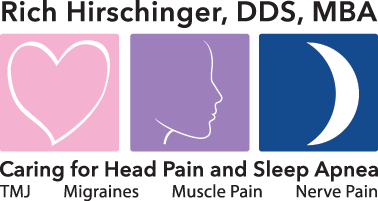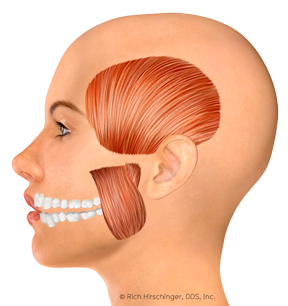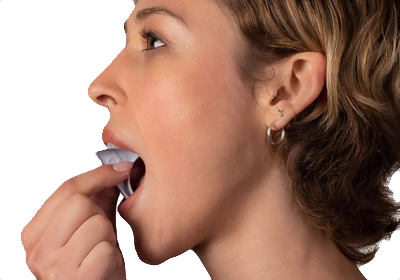

Diplomate American Board of Orofacial Pain
9615 Brighton Way, Suite 323
Beverly Hills, CA 90210
888.981.8981
N Rest, and Stretching Exercises for Jaw Muscle Pain

More About Myofascial Pain
There are many approaches to help patients with "TMJ" pain, or jaw muscle pain, just as there are many different names for the pain patients experience. One of the most effective approaches is something everyone can do on their own, which is to make sure your teeth are apart during the day. In addition, the muscles need to be stretched. This page contains information on how to learn to keep your teeth apart as well as a simple jaw stretching exercise you can do up to six times a day.
N Rest
When you keep your teeth apart, the muscles that are responsible for closing the jaw are not working so they are resting. If your teeth are constantly touching, the closing muscles are working to keep your teeth together, and this can lead to pain in the closing muscles and pain in the teeth. To help patients remember to keep their teeth apart, we teach them the "N rest" position. This is very easily taught to all patients and is very effective. All you need to do is say the letter, "N." Then ask yourself, "where is my tongue, where are my teeth, and where are my lips?" The answers are that your tongue should be on the roof of your mouth right behind your front teeth, your teeth should be apart, and your lips should be together. As a result of the N rest position, your jaw should be relaxed. It is normal for your teeth to touch when you swallow but since that is a very light and very quick touch, it is not something to worry about.
gentle jaw Stretching Exercise

One of the causes of facial pain is contraction of the closing muscles. The closing muscles are the superficial masseter, the medial pterygoid, and the temporalis. If these muscles are constantly squeezed together, they can start to cause pain because every muscle needs a rest. The body's way of getting your attention to an overworked muscle is to cause pain to get you to stop the pain-causing behavior. Clenching your teeth together during the day and/or night, and/or grinding your teeth at night, or chewing too much gum can cause a type of muscle pain called myalgia or myofascial pain. Most people tend to clench during the day, and clench and/or grind at night but everyone is different.
In order to counteract the constant tension that a contracted muscle is doing, you need to stretch the muscle. Dr. Hirschinger invented a passive jaw stretching device for acute and chronic TMJ and jaw muscle pain called the gentle jaw®, which he refers to as yoga for the jaw®. It is used for 30 seconds every two hours. You can learn more about the gentle jaw at www.gentlejaw.com or at Amazon by searching for "gentle jaw."
And it is my recommendation, except under very few circumstances, that you never let a dentist or a neuromuscular dentist adjust your bite, your teeth, or tell you that you need to wear an appliance 24 hours a day for three months to help your pain since we help our patients without doing any of those irreversible procedures. Once enamel is removed from your teeth, it cannot ever be added back so "measure twice, and cut once" to make sure that any irreversible procedure that is being performed is preceded by having tried all conservative treatment methods first. Therapy first, surgery last. Most orofacial pain specialists only recommend wearing an appliance when you sleep. You can learn more about the types of appliances I recommend by visiting my nighttime clenching and/or grinding appliances page.
If the N-rest and stretching along with a nighttime appliance do not help enough, the next step would be to try trigger point injections.






